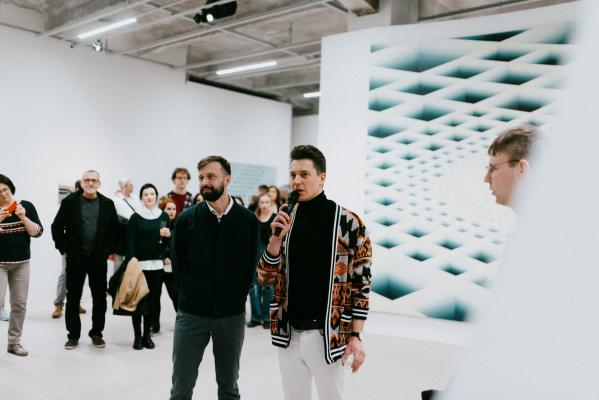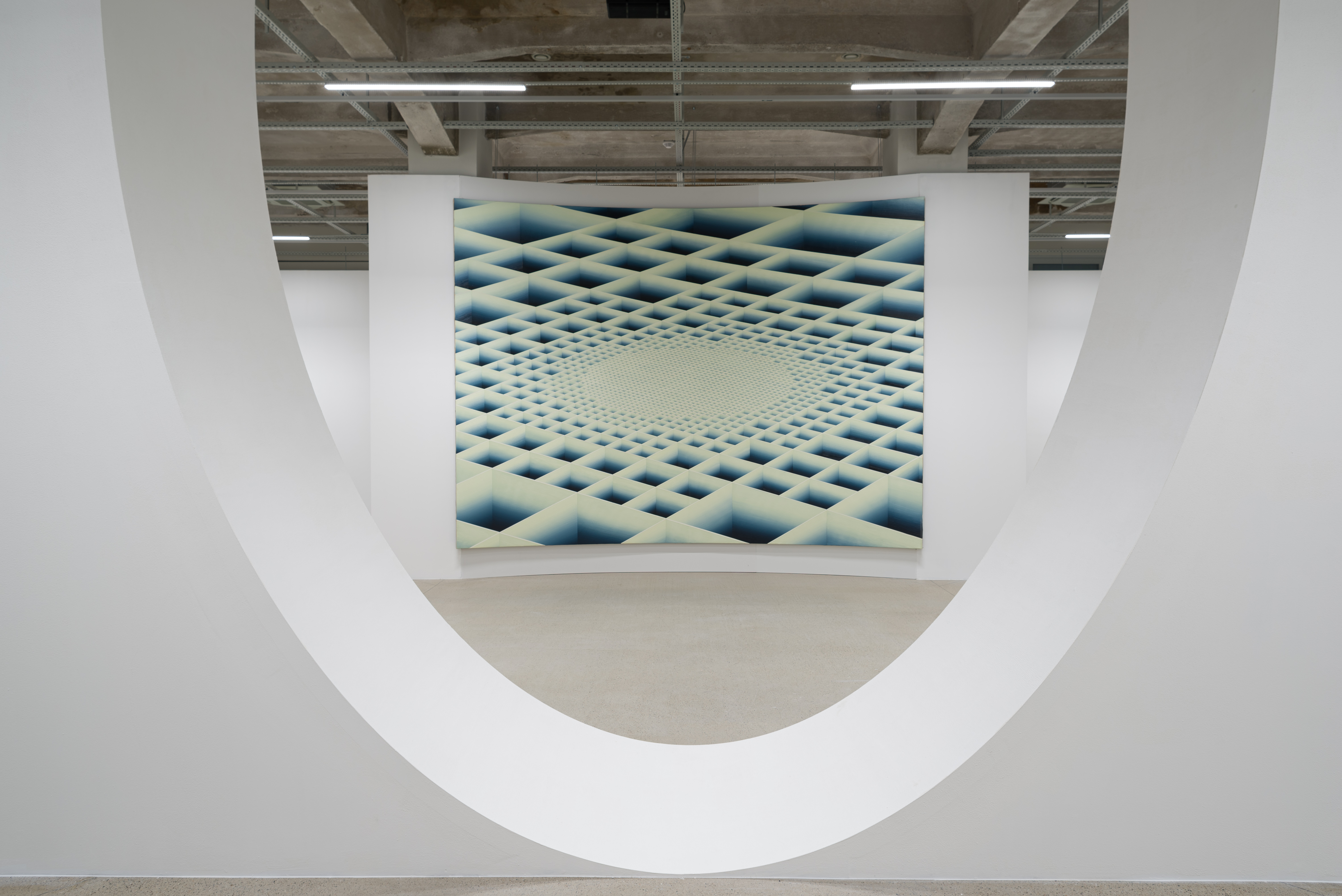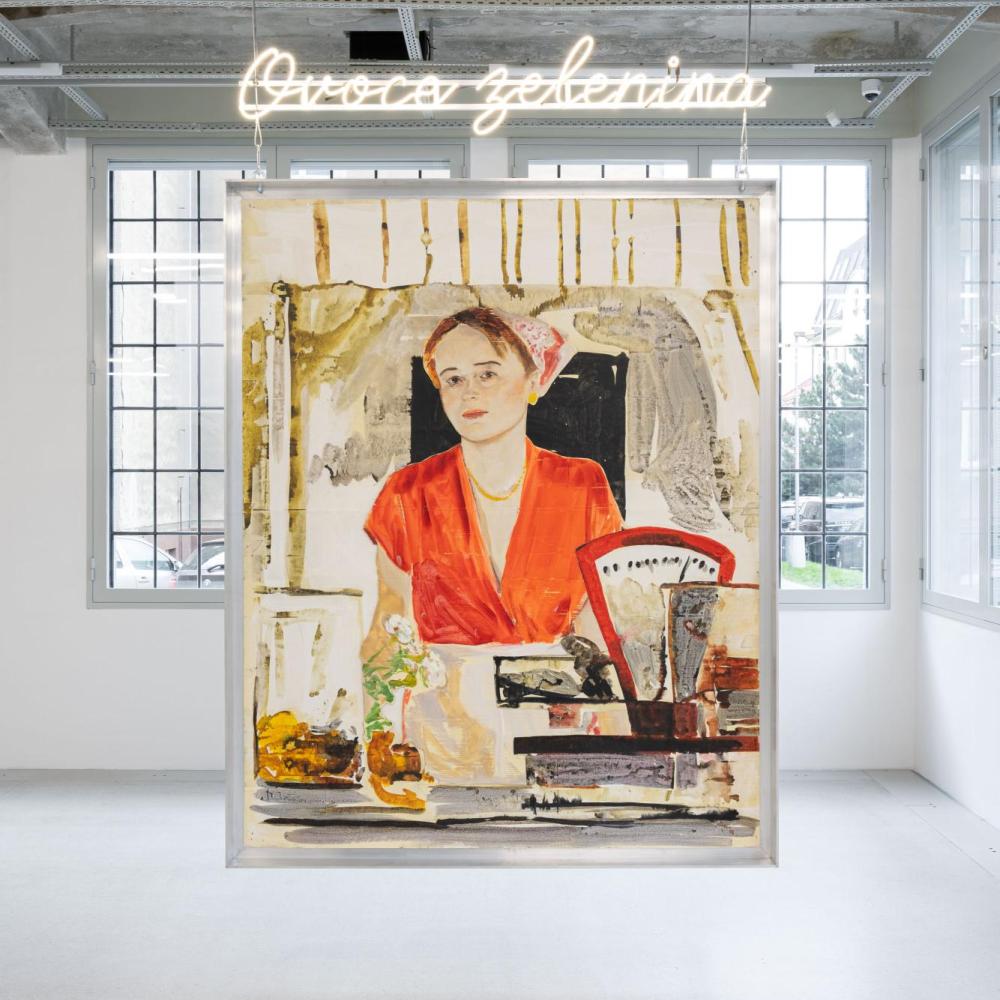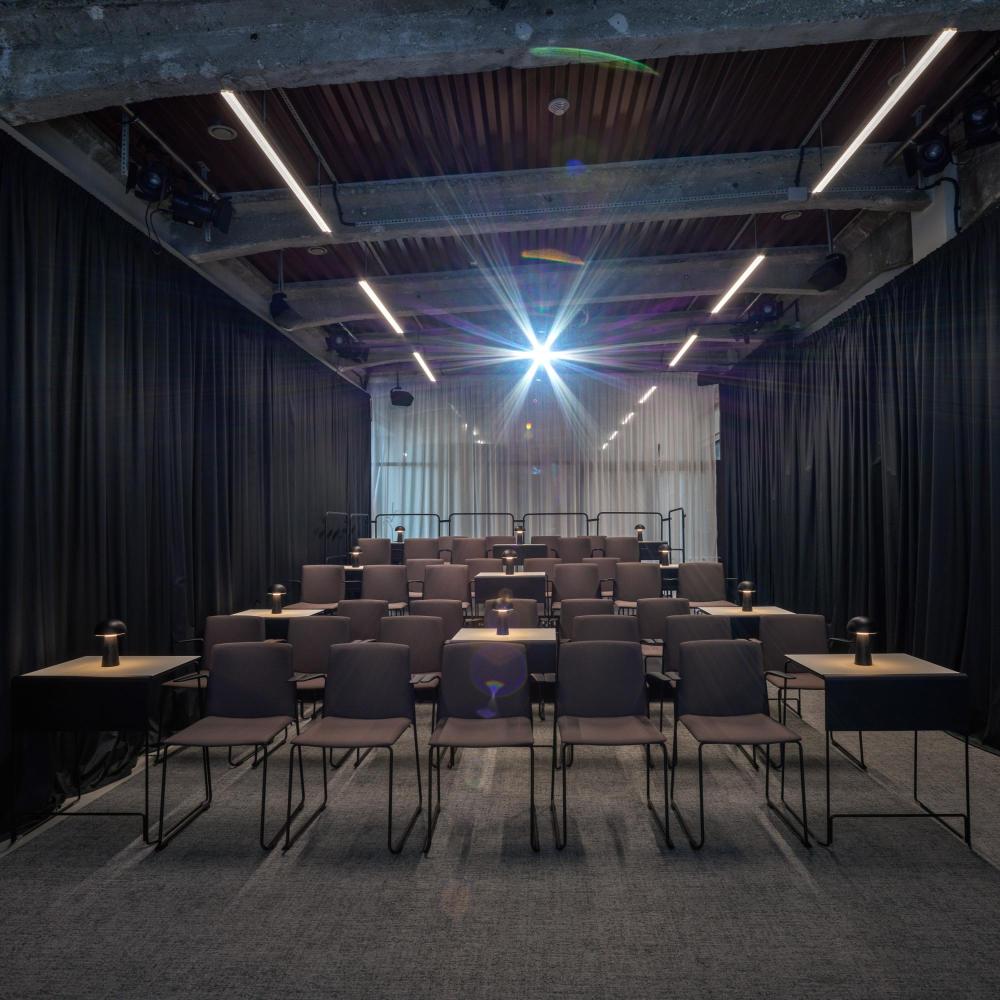
Jan Poupě has established a stable position in the field of Czech art, mainly thanks to the geometric form of traditional oil painting. However, the author is able to go beyond this framework in a comprehensive way, thanks to his intense need for artistic experimentation, which is at the beginning of all his projects. Jan very often transforms his exact grasp of the issues of the topics he explores into a constructive sculptural discipline, a scientific experiment, or completely new forms of artistic experimentation. Jan Poupě's work is dominated by two themes in particular, which he has long devoted himself to and subjected to conceptual analysis: the first is the issue of the physical phenomenon of flow, the second is the phenomenon of landscape representation. The exhibition Neuralscape, prepared for the Telegraph Gallery, focuses mainly on the second theme, i.e. the way of understanding landscape, its retrospective interpretation and its perception.
Jan Poupě's way of representing landscape is neither mimetic nor purely abstract. It is more of a mental deconstruction of the perception of space, which is then transferred to the painting canvas. The tools of understanding space, such as perspective or scale, are imaginatively bent by the artist, decomposed into primitive elements in order to subsequently build a new landscape out of them. In the neural network of the human brain, there are an infinite number of connections and variables to create new interactions. Jan Poupě's work points to this mental infinity, which he presents through the disciplines of painting, experimentation and site-specific art.

A comprehensive look at your work reveals the fact that the individual images form visions of new, perhaps utopian worlds. Does painting mean for you the possibility to create your own world, which is created according to the laws of your imagination?
Partially yes. Probably in my childhood, paintings served as visions of places I might like to visit or escape from reality. In my student days, images became individual tasks for me to push my thinking and my knowledge of the world. Studying painting or drawing is not learning to depict things to look like the things depicted, but rather learning to observe character, structure, and relationships in space and determining their importance. I think of paintings as studies working out some question of mine. What is important to me is that I want to know the outcome. I want to know how it will work. I see the paintings in a very complex way, not as closed worlds, but as objects in our space. Their location, their place and their ability to lead through space is important.
One can't help but notice the high level of handmade quality of your paintings, which you must have arrived at through years of drill. Have you ever engaged in continuous mimetic landscape painting?
Landscape and plein air painting has permeated my work from childhood to the present. It is both a great way to relax and a source of knowledge and inspiration. You get to go places you wouldn't otherwise look, spend time there you wouldn't otherwise spend, and notice things you wouldn't otherwise notice. Time spent observing is very important.
We conceived of the Neuralscape exhibition primarily from a series of paintings, Mining Space, which depict geometrized fictional landscapes. Was the thematization of landscape a primary starting point for your work and could you say who inspired you?
My main inspiration was my surroundings. The change that landscapes and cities are going through now. The moment between the old and the new, a moment of great potential and expectation. All the paintings are based on an inclined plane, a stylized bird's eye view of the landscape. Various geometric situations are then inscribed into this space. Characteristic is the view from above, which is itself a symbol of hope, knowledge or elevation for me. It comes from an effort to grasp the landscape, to understand it. It is linked to technological progress in the fields of aviation and aerospace. But it also brings with it an unsettling sense of the shedding of secrets and the revelation or loss of privacy. Here, I probably cannot find direct inspiration from another artist now, but otherwise I admire the work of Frank Stella, Jacob Hashimoto, Tony Cragg, Julie Mehretu, Jorinde Voigt, James Turrell, Piero Luigi Nervi and the studio of Pezo von Ellrichshausen, to name a few.
Could you genealogically trace the moment when you started to incline towards abstract geometry in your work?
The first hints appeared in paintings of landscapes of the urban periphery. At that time I was trying to distinguish the way the elements were painted. To emphasize, for example, the liveliness of the vegetation with a more expressive painting in contrast to the exact surfaces of the architecture, created with masking tape. In this way, I was beginning to assign symbolic meanings to individual parts and processes. I needed to express in the painting in some way the processes that are not visible, yet are the reason that shapes the landscape. I developed this further in the Structures series, where the image was carefully planned ahead, thus symbolically referring to the planning of the city and the world around us. This is how the first completely geometric compositions began to appear. Later, I began to reintroduce space back into the paintings based on various mechanisms of constructed perspectives.
David Hockney, a big name in the art world, draws mainly on photography in his paintings depicting landscapes. Does photographic thinking influence your work in any way?
I often define myself against photography. We live in a world where we are more often confronted with photographic reproduction than with the images themselves. I try to make sure that looking at my images brings an authentic experience. What is most interesting in my paintings is not reproducible in a photograph. I take great pride in the scale, the processing of the material, the gloss of the individual surfaces. I believe that the privilege of a painting is that it has been created by a painter who has immediate control over it, and then it is consumed by the viewer anyway. There is no intermediary that can distort the image. It is created "by the eye for the eye". But I also realize that photography is a very fascinating field. The technical possibilities of depicting space and manipulating it with photographic technology completely surpass human physiological abilities, and that inspires me, for example.
Your work does not consist exclusively of painting. You are the author of several monumental objects and site-specific installations. In the Neuralscape exhibition there is a wall with an elliptical opening dividing the gallery space. Could you tell us more about the reason for this installation?
It is about adapting the space to fit the scale of the paintings. I try to create a space for the viewer by considering where they will look at the paintings from, from what distance and how they will move through the space. At the same time, the overall layout of the space is subordinate to a unifying geometry that directly touches the geometry of the paintings. The dominant feature of the exhibition is a panoramic curved painting. The centre of the circle of the sag is located in the centre of the space.
I know you are fascinated by flying, aerodynamics and airflow. How did you find the visual key to translate these themes into a painting?
It's all related. In previous questions, I've commented on the bird's eye view and the grasp of landscape or photography. Another source of inspiration for me is maps, especially meteorological maps. Maps that reveal some process in the landscape or show us the current situation. I am fascinated by how we are able to read the space of the landscape through visual conventions. I wonder to what extent we perceive in the same way, for example, a perspective or even a photograph, which we normally think of as a representation very similar to our natural view of the world.
By Jan Dotřel







